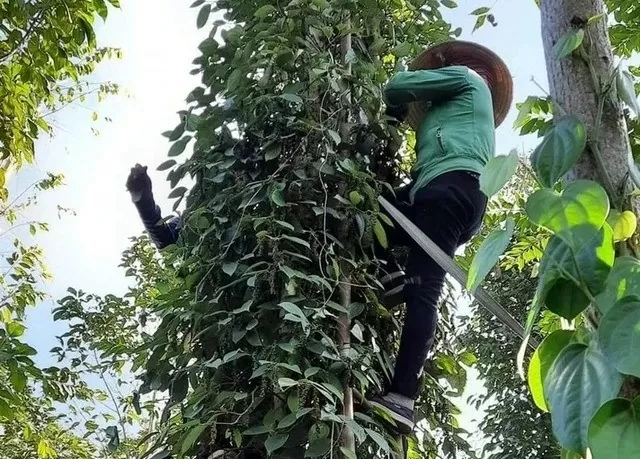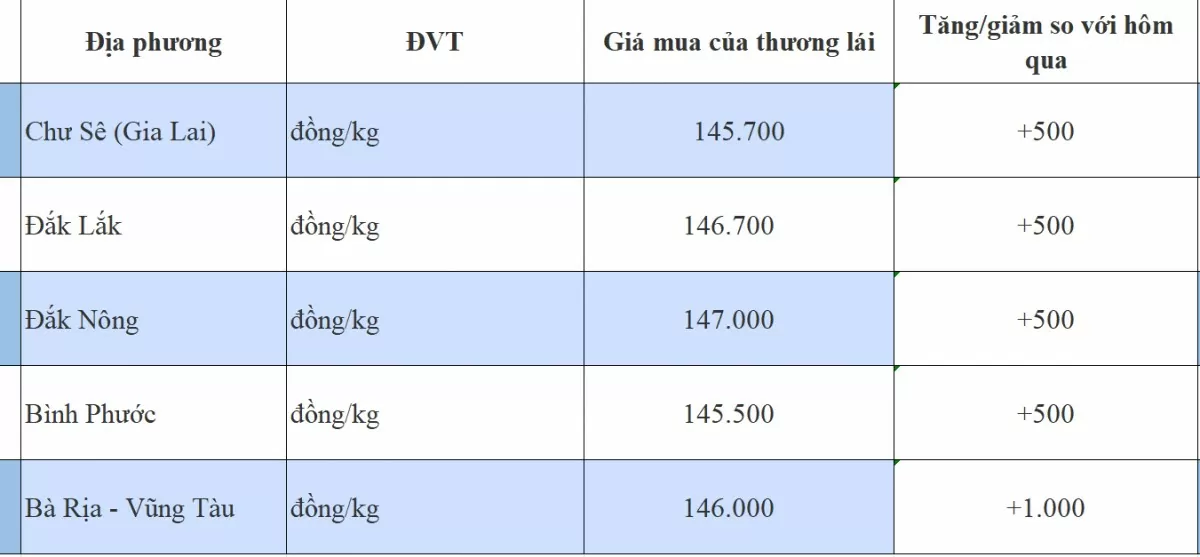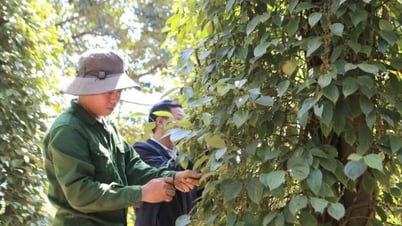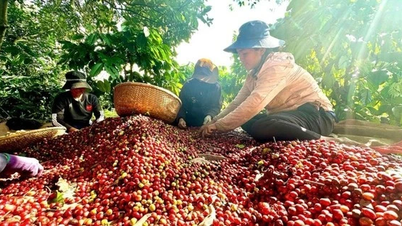Pepper price today, October 25, 2024, in the Southeast region increased by 500 - 1,000 VND/kg compared to yesterday, trading around 145,500 - 147,000 VND/kg, the highest purchase price in Dak Nong province is 147,000 VND/kg.
Accordingly, Dak Lak pepper price was purchased at 146,700 VND/kg, an increase of 500 VND/kg compared to yesterday. Chu Se pepper price (Gia Lai) was purchased at 145,700 VND/kg, an increase of 500 VND/kg compared to yesterday. Dak Nong pepper price today was recorded at the highest level of 147,000 VND/kg, an increase of 500 VND/kg compared to yesterday.
 |
| Pepper price today October 25, 2024: Will the pepper market recover and develop again? |
In the Southeast region, pepper prices today fluctuated compared to yesterday. Specifically, in Binh Phuoc, pepper prices today are at 145,500 VND/kg, an increase of 500 VND/kg compared to yesterday. In Ba Ria - Vung Tau, it is currently at 146,000 VND/kg, also an increase of 1,000 VND/kg compared to yesterday.
Thus, continuing the upward trend, domestic pepper prices today in key regions increased for the third consecutive day compared to yesterday, recording the highest price at 147,000 VND, fluctuating in the price range of 145,500 - 147,000 VND/kg.
World pepper price today
Update on world pepper prices from the International Pepper Association (IPC), at the end of the most recent trading session, IPC listed the price of Indonesian Lampung black pepper at 6,739 USD/ton, up 0.18% compared to yesterday, the price of Muntok white pepper at 9,226 USD/ton, up 0.17% compared to yesterday.
The price of Brazilian ASTA 570 black pepper increased to 6,400 USD/ton. The price of Malaysian ASTA black pepper was at 8,500 USD/ton, down 2.35%; the price of this country's ASTA white pepper reached 11,000 USD/ton, down 1.82%.
Of which, the price of Vietnamese black pepper is traded at 6,500 USD/ton for 500 g/l; 550 g/l at 6,800 USD/ton; the price of white pepper is at 9,500 USD/ton.
IPC adjusted pepper prices in Indonesia and Brazil back up, while decreasing in Malaysia.
Pepper prices came under downward pressure in the third quarter and early October as agricultural companies, dealers and intermediaries were actively selling black pepper. This activity was mainly driven by liquidity needs, as sellers sought to raise capital to invest in coffee, an agricultural product that is in the harvest season.
In addition, the fact that Brazil and Indonesia are in the harvest season, while world demand is not increasing strongly, along with China not buying much, also contributed to the price decrease in the third quarter.
However, low domestic inventories have kept pepper prices high. Domestic pepper prices are still nearly 80% higher than at the beginning of the year and double the same period last year. Pepper and coffee are the two agricultural products with the strongest price increases in recent times.
The global pepper market saw little change last week, with demand picking up in major markets such as the US, EU and Asia, while the Middle East and China remained subdued. Inventory levels have fallen significantly, prompting farmers and dealers to limit sales as pepper prices eased slightly.
The unstable global economic situation is negatively affecting the global demand for pepper. Rising inflation and the risk of economic recession in many countries are causing consumers to tighten their spending, reducing the demand for non-essential items such as pepper.
In the short term, the pepper market is expected to continue to face many fluctuations. Pepper prices may remain stable or decrease slightly due to limited supply and no signs of strong recovery in demand. However, in the long term, when the world economic situation is more stable and climate change adaptation solutions are effectively implemented, the pepper market may recover and develop again.
Domestic pepper price on October 25, 2024
 |
*Information for reference only. Prices may vary depending on time and location.



![[Photo] More than 17,000 candidates participate in the 2025 SPT Competency Assessment Test of Hanoi National University of Education](https://vphoto.vietnam.vn/thumb/1200x675/vietnam/resource/IMAGE/2025/5/17/e538d9a1636c407cbb211b314e6303fd)
![[Photo] Readers line up to visit the photo exhibition and receive a special publication commemorating the 135th birthday of President Ho Chi Minh at Nhan Dan Newspaper](https://vphoto.vietnam.vn/thumb/1200x675/vietnam/resource/IMAGE/2025/5/17/85b3197fc6bd43e6a9ee4db15101005b)


![[Photo] Prime Minister Pham Minh Chinh chairs meeting on science and technology development](https://vphoto.vietnam.vn/thumb/1200x675/vietnam/resource/IMAGE/2025/5/17/ae80dd74c384439789b12013c738a045)

























![[Photo] Nearly 3,000 students moved by stories about soldiers](https://vphoto.vietnam.vn/thumb/1200x675/vietnam/resource/IMAGE/2025/5/17/21da57c8241e42438b423eaa37215e0e)






































































Comment (0)